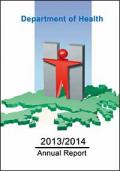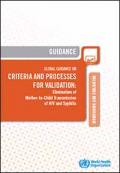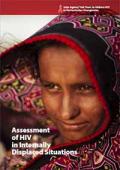What's New
Displaying results 3141 - 3150 of 4914

Resource | Publications,
This annual report of the Department of Health reviews the health of our community, introduces the Department’s health services, highlights our work in that year and outlines our future work.
In 2013, emerging communicable diseases continued to be one of the threats to the health of our community. The Middle East Respiratory Syndrome remained active in the Middle East while over a hundred cases of human infection of avian influenza A (H7N9) were also recorded in the Mainland with sporadic imported cases reported locally. In response to these challenges, the Department implemented various measures to guard against the threats of these diseases. With the conjoint efforts of the Department and the community at large, Hong Kong was free from local outbreak of these emerging communicable diseases.
Reducing the impact of non-communicable diseases is also an important area of work of the Department. Tobacco control and reduction of alcohol-related harm have been public health priorities in Hong Kong.

Resource | Guidelines,
The global community has committed itself to eliminating mother-to-child transmission (MTCT) of HIV and syphilis as a public health priority. The initiative to eliminate mother-to-child transmission (EMTCT) of HIV and syphilis focuses on a harmonized approach to improving health outcomes for mothers and children. The global community has set international and regional goals, and countries are scaling up programmes towards EMTCT of HIV and syphilis.
This document outlines minimum global processes and criteria for validation of EMTCT of HIV and/or syphilis in a country; provides a description of global EMTCT validation targets and indicators; explains the operation of validation committees and secretariats; and reviews the validation procedure itself, including maintenance of validation status. This document is intended for use by national, regional, and global validation committees for EMTCT of HIV and/or syphilis, national AIDS and sexually transmitted infection (STI) programme managers, maternal and child health programme managers, monitoring and evaluation (M&E) officers, policy-makers and staff of technical agencies, and international partners involved in supporting initiatives for EMTCT of HIV and/or syphilis.

Resource | Tools,
The factors that determine HIV transmission in internally displaced situations are complex and depend on the context. Internally displaced persons (IDPs) are defined as “persons or groups of persons who have been forced or obliged to flee or to leave their homes or places of habitual residence, in particular as a result of, or in order to avoid, the effects of armed conflict, situations of generalized violence, violations of human rights or natural or human-made disasters, and who have not crossed an internationally recognized state border”.
Following immediate response in emergencies, including minimal initial HIV and reproductive health interventions, more comprehensive HIV programming needs to be developed for IDPs. A broader framework for response is needed because the focus of intervention shifts from individuals to general social situations, processes, and displacement phases in which IDPs and their families live, which may continue for long periods of time.

Resource | Presentations,
Michael Smith Foundation for Health Research Scholar
Faculty of Health Sciences, Simon Fraser University

Resource | Presentations,
A compilation of the epidemiology data and graphics contained in the Gap report on adolescent girls and young women.

Resource | Presentations,
A compilation of the epidemiology data and graphics contained in the Gap report on children and pregnant women living with HIV.

Resource | Presentations,
A compilation of the epidemiology data and graphics contained in the Gap report on displaced persons.

Resource | Presentations,
A compilation of the epidemiology data and graphics contained in the Gap report on gay men and other men who have sex with men.

Resource | Presentations,
A compilation of the epidemiology data and graphics contained in the Gap report on migrants.






